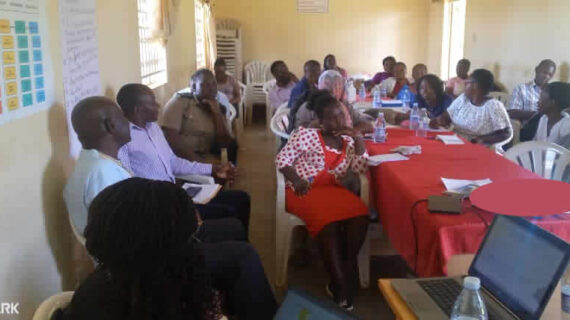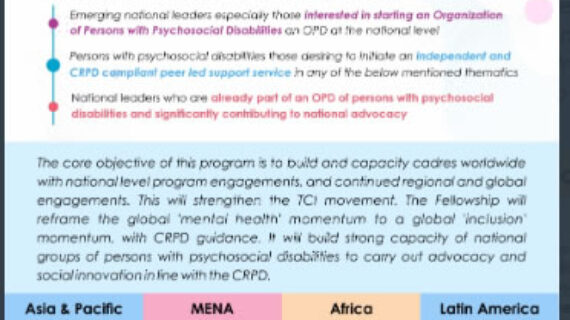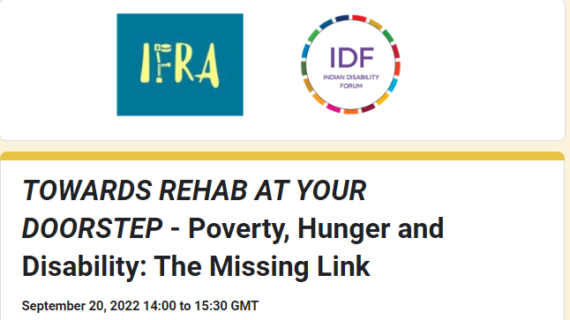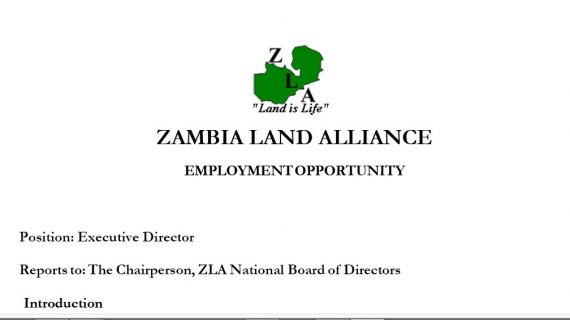Feedback tool for the Assessment of the Impact of the WHO Guidelines
CBR Africa Network (CAN) is an independent Non-Governmental Organisation that facilitates information sharing on disability, Community-Based Rehabilitation (CBR) and inclusive development within Africa and across the World. CAN believes in information sharing as critical to the promotion of CBR strategy for sustainable development and building the capacity of its members to be able to share the information with the wide African audience.
One of the ways through which CAN promotes CBR is through sharing WHO CBR Guidelines as a support tool for effective CBR implementation. A feedback tool was developed for assessing the impact the Guidelines are having on CBR work in Africa.
This survey was sent to the CAN members around Africa in November and December 2018. Secretariat received 104 responses to this tool. Below is the analysis of the information collected.
- Do you use the CBR Guidelines in your work?
Only 9.6 % of the respondents do not use CBR guidelines for their work. The remaining 90.4% use the guidelines in their day to day CBR activities which include field work, rehabilitation, research, teaching etc.
- Where did you access the CBR Guidelines?
29% of respondents noted that they had received the guidelines from CAN meetings and website. 27% have received the guidelines from other sources and 44% received the guidelines directly from WHO.
- Tick the elements of the CBR guidelines you use most frequently in your work:
When asked what element of the WHO guidelines most used by the respondents, these were the results. 17% respondents answered that they use the Education element. 22% use Empowerment element, 38% use Health element, 13% use Livelihood and 10% use Social.
- What is your country of operation?
See below the breakdown of the countries of the individuals who responded to the survey
| Country | No of Individuals |
| Zambia | 20 |
| Uganda | 15 |
| Ethiopia | 14 |
| Rwanda | 7 |
| South Africa | 7 |
| Burkina Faso | 4 |
| Tanzania | 4 |
| Togo | 4 |
| Outside Africa | 3 |
| CAMEROON | 3 |
| Malawi | 3 |
| Nigeria | 3 |
| Did not complete | 2 |
| Egypt | 2 |
| Kenya | 2 |
| MADAGASCAR | 2 |
| Botswana | 1 |
| Côte d’Ivoire | 1 |
| Mozambique | 1 |
| Namibia | 1 |
| Pakistan | 1 |
| République du Congo | 1 |
| Somalia | 1 |
| The Gambia | 1 |
| Zimbabwe | 1 |
| TOTAL | 104 |
The survey had responses from 25 countries around Africa.
- How useful do you find those elements of the CBR guidelines?
17% indicated that they were somewhat useful and an overwhelming 83% indicated that they found them very useful.
- Would you recommend and share the guidelines with members of your network?
Only 6% mentioned that they would not. The remaining 94% noted that they would because of their usefulness for CBR practitioners. Additional comments were the guidelines are easy to use and can be used as references especially during CBR trainings.
- How have the CBR guidelines improved on your general knowledge and work of CBR?
Majority respondents noted that the guidelines have greatly improved their work. Below are some of the more notable responses to how:
- The guidelines are being used when preparing newsletters and during CBR meetings.
- The guidelines are a point of reference for the work carried out. Also helps in review of work being done. The guidelines are simple and easy to translate to local languages.
- Through sensitization meetings, have been able to lobby here and there to enable the association remain relevant to its disabled membership working in the communication system.
- It has helped us give guidance on how to engage with community members especially the youth.
- The Guidelines allow us to explore how we can better work for child development and allows us to build the capacity of our grassroots partners in the Empowerment Action Pathways
- It’s the only strategy to carb down poverty at household levels and also to address issues affecting the OVC’s especially CWDs.
- They have improved on my general understanding on how to pass the Cbr Knowledge to my students while in and outside class. Illustrations are simple to use and make it simpler for the students and community people to understand.
- I have come to know and understand the rights of people with disabilities and the need to collaborate with stakeholders to ensure that these are realised.
- Communities are involved in raising awareness on the causes of Hearing loss and raising awareness of their rights
- In addressing issue of disability and special needs of PwDs, collaboration of actors and integration of programs are very decisive for effective implementation of projects
- The guidelines have helped me get skills of empowering persons with disabilities with sustainable livelihoods as well as our inherent rights
- CBR guidelines have allowed me to take a more holistic approach to supporting children and youth with disabilities. With these guidelines, when we have to support a child, we are interested in all aspects of his life. These include health, education, vocational training, social background and empowerment. These guidelines allowed me to strengthen the capacities of the partner organizations with which our NGO DDE-CI works. As part of our work, we recommend our partners to always have an RBC approach in analyzing the needs of children and youth with disabilities that they support. As such, we ask them to use the CBR matrix regularly, to work with all stakeholders who can make a contribution to improving the living conditions of children and young.
- Knowledge and work have improved greatly after being Secretary of the CAN Executive Committee from 2004 to 2010 and attending several CAN Conferences., I have been able to convince the Government and mentor my colleagues and stakeholders to participate in CBR work to the extent that we formed a National CBR Steering Committee and the Districts (14 out of 28) where CBR was introduced have District CBR Coordinating Committees that are chaired by a District Director of Planning and Development., Shortly, CBR is being devolved to the Local Council for planning, implementation, monitoring and evaluation in order to cover the whole country.
- In terms of general knowledge it increased and strengthened my holistic approach when working with person with disabilities and, in terms of work of CBR, it helped when planning intervention activities and also in strategic discussion at national level with Government
- The CBR guidelines helped me to think out of an outreach program of healthcare professionals. Initially my understanding on CBR was the provision of rehabilitation services but the guidelines helped me to understand the scope of CBR intervention as a strategy for general community inclusive development.
- Better understanding of the role of CBR in rehabilitation service delivery, family participation in achieving health goals, determinants of health and their application to disability, barriers to accessing health care and rehabilitation services, and inter-sectoral collaboration in the development of interventions of disability in i) health promotion, ii) disability prevention, iii) rehabilitation service delivery
- Strengthen community capacity on Identification and utilization of local resources, • Enabled community to design project which are more inclusive, • Mainstream disability agenda in existing development programs, • Promote full participation of community members and persons with disabilities in CBR programs , • Community ownership and commitment to CBR projects, • Ensure sustainability
- Have assisted in the integration of persons living with disabilities in many of the programs as well as initiating certain programs for the people with disabilities
- To improve knowledge about all component and multidisciplinary actors , implication of partners
On the other hand, it was noted that:
- Some guidelines are still in a frame of medical model instead of social model
- 3 participants noted that they require training in the use of the guidelines as they are not being used effectively in their organisation
- What do you do differently as a result of accessing CBR guidelines as opposed to when you never had access to the guidelines?
Some of the more notable answers were:
- Refer other appropriate guidelines like World Federation’s principle and guidelines
- Improved supervision of CBR activities for my organisation
- Now have more Cases studies to refer during research. Additionally we can have evidence based recommendations.
- We appreciate inclusive education/development practices.
- Seeking help for empowerment projects in order to reduce impact of disability among the members to lead sustainable lives
- Inclusion of all categories of people in our areas of coverage
- Have a perfect tool that I use in advocating for Nigeria to truly implement the UN CRPD
- Accessing CBR guideline is undertaking program activities with knowledge and skill as well as effectively and efficiently. Now the concept of CBID is emerging. How to transform or accommodate may need a sort of amendment.
- Guidelines help me to do impact assessment of my work of empowering persons with Psycho-social/intellectual disabilities with skills of advocacy & sustainable livelihoods disabilities
- Better formulation of objectives; – Setting of relevant outcomes for CBR; – Better determination of activities; – Better organization of the monitoring and evaluation process; – Systematization of accountability to stakeholders.
- The knowledge of the RBC guidelines allowed me to work differently from the time I did not know her. Since its discovery, my support for children and youth with disabilities is no longer limited to them, their parents and their neighbours. My accompaniments go beyond. This is the same for me as all the partners I work with. We are interested now:
- The provision of programmes and services for persons with disabilities in Malawi is comprehensive. Disability is recognized by the Government as a Human Rights, Cross-cutting and Development issue. Therefore, we plan our programmes and services centred on the components of the CBR Matrix. By doing so we believe we are also accomplishing obligations of the United Nations Convention on the Rights of Persons with Disabilities. At first MACOHAs programmes and services took a charity and medical model of disability. When CBR started, it was fragmented but now we have come up with a new harmonized CBR model that is comprehensive and uses the multisectoral approach.
- We had always do our work based on CBR Guidelines. However we have seen our success so much improved and implementation of our activities being made so much easier compared to those organizations that do not perform their work by following CBR guidelines.
- Now able to adequately and effectively deliver lectures to students as I deliver Rehabilitation Science lectures and prepare senior students for CBR attachment in various locations/health institutions in the country, better engagement of other sectors in the provision of rehabilitation services and human rights aspect.
- I do market analysis of the skills that are applicable to the situation of different PWDs, which i was never doing before. I also factor in the rehabilitation needs of different PWDs during their capacity building on livelihoods
- A coordination system has been put in place at the national level , involving of different ministries
- Most of the work was locally but now we are exchanging views and programs with outside NGOs
- I refer people with disabilities to appropriate services for their needs I sensitize the Togolese population on the rights of disabled people I am an active member of the Community Based Rehabilitation Network in Togo We educate schools to build ramps to facilitate class access for people with disabilities
- We are one of the pioneers in the introduction and implementation of CBR in Ethiopia since 1994 .We are implementing CBR/CBID on our evidence based experience together with guide lines.
Overall the survey results indicated the guidelines are being used around Africa by different CBR practitioners. The majority of the respondents find the guidelines useful and would recommend them to other organisations.







